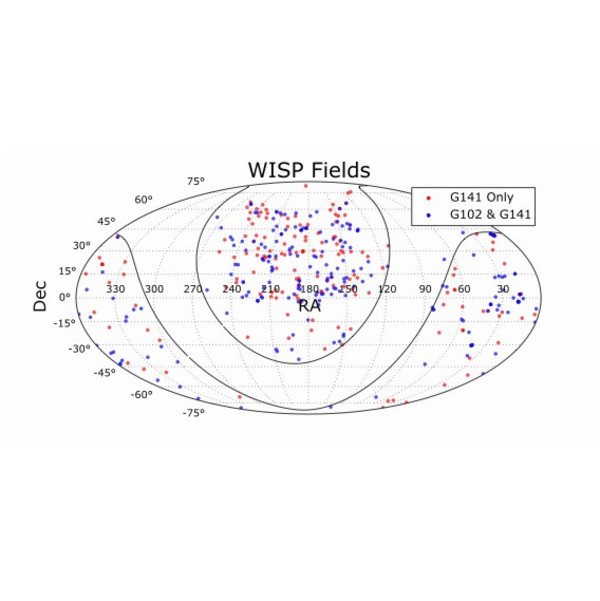Overview: The WISP survey is a large Hubble Space Telescope pure parallel program with the WFC3 G102 and G141 infrared grisms. The broad, continuous spectral coverage of the G102 and G141 grisms provides the best currently feasible measurement of the star formation rate continuously from 0.5 <z < 2.5. The primary WISP science goals are to: (1) measure the star formation history over the last 10 billion years; (2) probe galaxy clustering on Mpc scales at z=1-2; (3) constrain the evolution of dust extinction and metallicity as a function of mass and luminosity; (4) conduct a serendipitous search for highly luminous z >6 Ly-alpha emitters. The WISPs team includes several IPAC scientists, and data processing of images and spectra is carried out at IPAC. Further details can be found in the canonical paper: Atek et al. (2010).
The WISP survey is a large Hubble Space Telescope pure parallel program with the WFC3 G102 and G141 infrared grisms. The broad, continuous spectral coverage of the G102 and G141 grisms provides the best currently feasible measurement of the star formation rate continuously from 0.5 <z < 2.5.
The primary WISP science goals are to:
-
Measure the star formation history over the last 10 billion years
-
Probe galaxy clustering on Mpc scales at z=1-2,
-
Constrain the evolution of dust extinction and metallicity as a function of mass and luminosity,
-
Conduct a serendipitous search for highly luminous z >6 Ly-alpha emitters.
The WISPs team includes several IPAC scientists, and data processing of images and spectra is carried out at IPAC. Further details can be found in the canonical paper: Atek et al. (2010).




